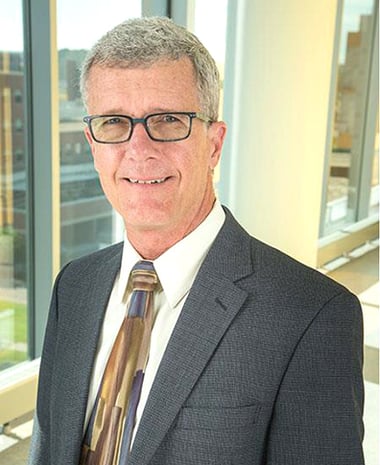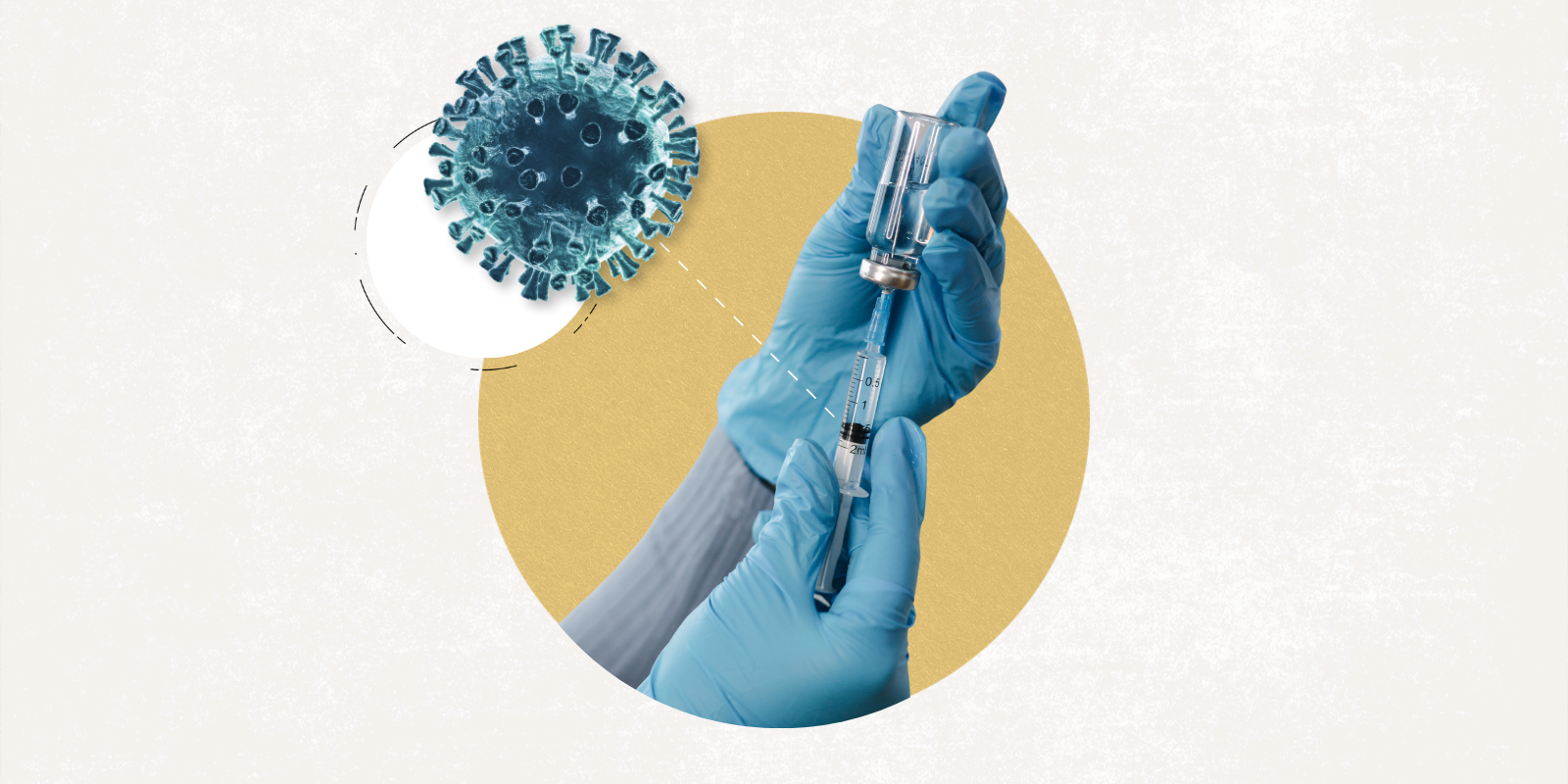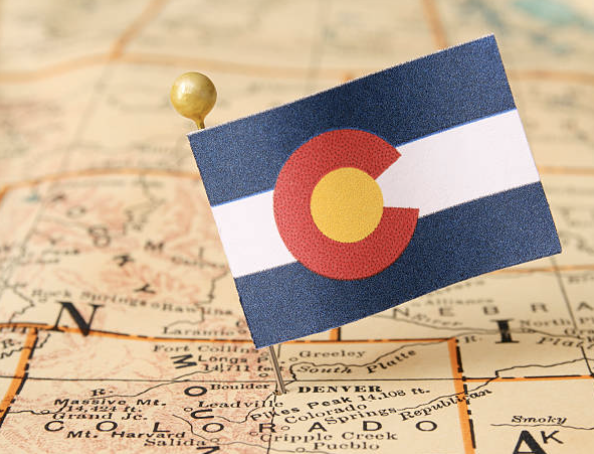For about 1.2 million Coloradans, the world suddenly appears brighter. They represent the small percentage of the state’s 5.9 million residents who, some might say, won the lottery first. They already have at least one COVID-19 shot.
Many of those people are grandparents, longing for the warmth of a grandchild’s hug. Or retired residents weary of being cooped up for months on end without their routine friend and family gatherings that keep them entertained and happy.
So how open is the world for them and the slowly growing COVID-19 vaccinated population?
 Thomas Campbell, MD Thomas Campbell, MD |
First off, one-dose folks should still follow no-dose practices until they join the nearly 740,000 fully vaccinated Coloradans, said Thomas Campbell, MD, an infectious disease expert at the University of Colorado School of Medicine (SOM).
Vaccinated pals? Go for it!
“Individuals who are fully vaccinated can safely gather with other individuals who are fully vaccinated without having to wear masks or socially distance,” Campbell said, citing recently released guidelines from the Centers for Disease Control and Prevention (CDC).
The CDC defines fully vaccinated people as those who are two weeks out from their second Moderna or Pfizer vaccine or two weeks out from the single-dose Johnson & Johnson shot.
“So, I agree with that,” said Campbell who led clinical trials for the Moderna vaccine on the University of Colorado Anschutz Medical Campus.
A St. Patrick’s Day Bash?
Another top-of-the mind question as spring holidays kick off and snowstorms push people indoors: What about co-mingling with the masses of yet unvaccinated people?
Again citing CDC guidelines, Campbell said the answer is yes, but only with single-family households that have no high-risk, unvaccinated people (a group that should soon dwindle as Colorado has moved into a vaccination rollout stage that includes teachers, people 60 and older and those who have at least two high-risk factors).
“So as long as you do not have risk factors for getting seriously ill from COVID, then it is OK for you to visit, but this does not mean large groups,” Campbell said. Even in the vaccinated/unvaccinated two-family setting, the CDC says visitors can forgo masks.
Let the freedom begin?
Ross Kedl, PhD, a CU Anschutz vaccinologist and strong believer in the COVID-19 vaccines, applauded the CDC for recognizing the effectiveness of the vaccines in its recent guidelines, although he believes the message should have come sooner.
Check out other articles in this series focused on the historic COVID-19 vaccine rollout.
“They are beginning to acknowledge the fact that not only are these vaccines very protective of you personally, but evidence continues to mount that they also suppress transmission very effectively,” said Kedl, who fears some of the mixed messages from public health officials will dis-incentivize people from getting the vaccine.
“There is an exceptionally remote chance that a vaccinated person is going to pass along an infection to somebody else,” said Kedl, a SOM professor of immunology and microbiology. Kedl, who is fully vaccinated along with his wife, recently visited his vaccinated in-laws for the first time in months.
The evidence so far suggests at least a 75% elimination of transmission with the Johnson & Johnson vaccine, Kedl said, noting that with the other two vaccines, transmission reduction is likely even “considerably better.”
Next up: Phase 1B.4 kicks off on March 19, opening the vaccination rollout to all Coloradans 50 and older, persons with one high-risk condition, higher education faculty and staff who work in-person with students and other front-line workers. Find a full eligibility list here.
Not time for a free-for-all
Kedl said that if he and/or his wife were not vaccinated (they both were in non-placebo groups during separate clinical trials), that they would not likely sit inside with no masks for long periods with the older in-laws. “The risk is not zero they could get sick.”
Data suggest all vaccines in use in the United States prevent severe illness, meaning an infection that makes a person sick enough to be hospitalized or die. “But I’d rather not risk causing my in-laws any discomfort. That doesn’t look good for a son-in-law, especially not as a vaccinologist.”
 Ross Kedl, PhD Ross Kedl, PhD |
Campbell also said, despite the CDC recommendations, low-risk unvaccinated people visiting vaccinated people might still want to wear a mask indoors.
He also said vaccinated people should not plan any non-essential plane travel just yet, and that they should follow all local mask and distancing guidelines when shopping or going to restaurants.
“The CDC guidance on travel has not changed,” Campbell said. “They recommend that people not travel unless it’s absolutely necessary. I’d agree.”
Balancing caution with trust
While Kedl doesn’t suggest that everyone flout public health recommendations, he re-emphasized that people should understand the true risks when faced with tough decisions.
“The CDC allows for vaccinated people to not have to quarantine after an exposure to someone with COVID, even if that someone lives in their own home. It’s hard to then see how traveling through an airport somehow constitutes a greater risk than that. There also was never a tremendous amount of evidence that the airports have ever been significant spreader locations anyway,” he said, noting that is largely because of the rigidity of protocols. “And being vaccinated further neutralizes the risks.”
Of course, Kedl understands the need for following mask-wearing and social-distancing guidelines in public. “The virus is still out there, and there is still a risk to those who are unvaccinated. We do have the responsibility to keep each other safe,” he said.
“But there have never been vaccines in the history of vaccines that protect this well that don’t completely crush transmission. These are incredibly strong,” he said. “And the risk to life and health from isolation is only growing.”
His advice for vaccinated grandparents (and others): “First of all, hug your grandkids,” Kedl said, noting the chance of transmission is slim during a quick hug. “Contact transmission is very rare. It’s about how long you breathe around somebody else.” Secondly, Kedl said: “You can be cautious and trust in your vaccine.”

.png)

